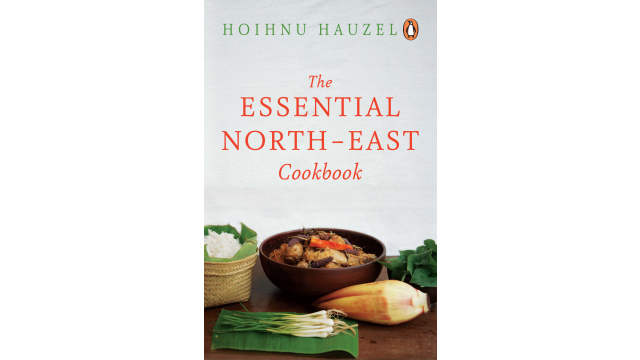The Brain Food: Brahmi

Paddy fields in Manipur in the northeast of India, especially after the harvest, are full of wildly grown Bacopa monnieri, or brahmi as it is commonly known in India. The name “Brahmi” refers to Saraswati, the “brainy” Hindu goddess of wisdom and intelligence. It is also called the herb of grace and is used in Ayurveda for its many medicinal and healing properties.
Growing up in Manipur, I have memories of brahmi (water hyssop) growing wild like weeds around my house. It’s a perennial plant with tiny leaves and is resilient and thrives particularly well in all types of soil: wet, shallow, dry. It also grows well in areas around people’s homes. I remember brahmi sprouting on sidewalks, or wherever it didn’t demand much water or tending.
A Brain Friendly Herb
Brahmi is sought after for its many health benefits in traditional Indian medicinal practices. In south India and Sri Lanka, the gotu kola (Centella Asiatica) plant is often interchangeably called brahmi as it has similar properties listed in Ayurveda.
In northeastern India, where I hail from, I was familiar with brahmi ever since I was a little girl. In Manipur, foraging for brahmi is a familiar sight. I have seen people pluck it off the ground and spend a lot of time cleaning the roots to add to brews and elixirs. The roots hold the real flavor apart from the leaves.
Locals in Manipur refer to brahmi as a natural memory aid. Many school friends recall how their mothers would give them a leaf or two before their exams, assuring that their wards would not forget what their had studied the night before. Whether their report cards confirmed that it did the trick or not, faith and belief remain strong in these parts that brahmi aids memory and boosts brain function. I’ve seen my north Indian friends massage brahmi oil on their scalp to cool them down in the heat of the Indian summers before a long shower.
Beyond traditional wisdom brahmi was simply a part of our diet in Manipur. Exams or not, brain boosters or not, it was part of our regular meals for we simply ate what was available and what nature offered.
My grandma, a deity-like matriarch of the Paite ethnic tribe we hail from, would say brahmi helped her to overcome forgetfulness as a neurotropic herb. She would nudge us to chew the raw leaves. As the bitter taste slowly oozed into our mouths, we kids would make faces. Grandma was satisfied only when she heard us groan about the bitter taste and would murmur that “something good has gone into your systems,” and that our health would benefit from it.
As a child, I was introduced to brahmi not as a medicinal herb but as plant food. Again, it was a part of the repository of our famous series of bitter plant foods in our home like bitter gourd or adulsa. It grew abundantly in our backyard, and my parents would pull out the long shreds from the earth for cooking. They were first washed and cleaned — especially the roots. My father especially enjoyed cooking and serving them in different dishes.
Brahmi can be eaten raw in a salad. In Manipur, we finely chop the leaves and roots and mix with roasted chile powder, fermented dry fish, and salt. We toss sliced onions into this and relish it as a side dish. (You can exclude the fish for a vegetarian version.)
A brahmi broth was also made regularly at home. The leaves would be boiled in water and brought to a condensed level. Each of us would be served a small cup of the bitter broth as children. The leftover drained leaves were mashed to make a chutney. We also added the cooked leaves to boiled potato, chiles, fermented fish, and salt. What comes out of it is ironba — a comfort food which is a signature local dish of Manipur.
Brahmi’s Herbal Wisdom
Modern research has shown that components in brahmi are nootropic which confirm the traditional wisdom about this herb. Brahmi can aid in supporting attention, short-term memory retention, and anxiety levels. In the West it is being marketed as a memory aid and for its antioxidant properties.
In India, herbal remedy stores and Ayurvedic pharmacies stock brahmi in the form of tonics, tablets, and oils. Pharmaceuticals use extracts of the plant for its antioxidant properties. The fact that it is found to enhance antioxidant activity, among many, is enough reason why it considered a healing herb.
In recent times brahmi is showing up in modern organic shops in India in the form of tea, new age infusions, and elixirs produced by wellness food companies. One was a “Brahmi-Brain Booster” tea bag. The writing on the carton claimed that the tea would, “Boost cognitive functioning: keeps stress and anxiety at bay.”
When I visit Manipur these days, I don’t find brahmi growing in homes anymore because every inch of our backyards is cemented or built as part of the urban space crunch, leaving no patches where plants like brahmi can sprout wildly. Today when I visit Imphal I find brahmi tied in small bunches and sold by the women who sell vegetables and greens in the market. Which means we don’t quite go out foraging anymore. Or rely on our backyards at home. However, the fact we still have access to such a super healing food is a comforting thought.
Key Takeaways
- Brahmi can boost cognition.
- It reduces stress and aids memory.
- It forms Northeast India’s culinary medicine.



